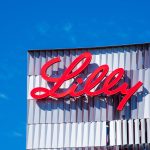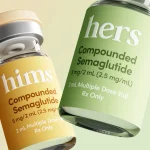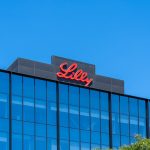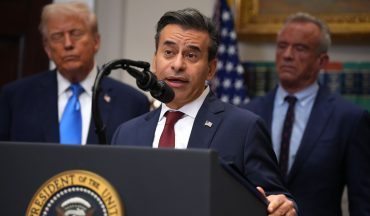
- Earnings
- Healthcare
J&J Reports $15B Pharma Sales Despite 43% Stelara Drop
5 minute read

Johnson & Johnson’s pharmaceutical sales defy biosimilar competition as innovative drugs fuel record-breaking quarterly performance
Key Takeaways
- Johnson & Johnson achieves record $15 billion quarterly sales in innovative medicines despite facing significant biosimilar competition for the first time.
- Stelara revenue plummets 43% to $1.7 billion as eight biosimilars launch with discounts ranging from 46% to 90% off the original drug’s list price.
- J&J raises annual forecast by $2 billion to between $92.7 billion and $93.1 billion, demonstrating portfolio resilience across oncology and immunology divisions.
Introduction
Johnson & Johnson demonstrates remarkable portfolio strength by achieving record quarterly sales of $15 billion in innovative medicines while absorbing a $1.2 billion revenue hit from biosimilar competition. The pharmaceutical giant posted total quarterly sales of $23.7 billion, marking a 6% year-over-year increase despite its blockbuster immunology drug Stelara facing unprecedented competitive pressure.
This performance signals a critical inflection point for the pharmaceutical industry as companies navigate patent cliffs affecting over $100 billion in biologic sales over the next five years. J&J’s ability to offset major losses in one therapeutic area with gains across oncology, immunology, and neurology provides a template for managing biosimilar disruption.
Key Developments
The launch of Stelara biosimilars in early 2025 triggered an immediate market disruption. Eight biosimilar competitors entered the U.S. market, including Amgen’s Wezlana, Sandoz’s Pyzchiva, and Biocon’s Yesintek, offering substantial discounts to capture market share.
Pharmacy benefit managers moved aggressively to prioritize biosimilars over the original drug. CVS and Optum excluded Stelara from preferred formularies, while Evernorth offered a biosimilar alternative at more than 80% off the reference price with zero copays for members.
J&J responded by leveraging growth across its broader portfolio. Thirteen brands achieved double-digit growth during the quarter, with cancer treatments leading the charge. Darzalex sales increased 23%, while Carvykti generated $439 million in revenue with robust growth momentum.
Market Impact
Stelara’s quarterly revenue declined from approximately $3 billion in the previous year to $1.7 billion, representing a 43% decrease. The drug’s worldwide sales trajectory shows accelerating erosion, with Q1 2025 already posting a 33.7% year-over-year decline.
Despite this significant headwind, J&J’s stock performance remains supported by strong growth in other therapeutic areas. The company’s neuroscience division expanded almost 15% to exceed $2 billion in quarterly sales, driven by Spravato’s 50% growth rate.
Market analysts view J&J’s raised annual guidance as validation of its diversification strategy. The upward revision reflects confidence that pipeline assets can compensate for Stelara’s continuing decline through 2025 and beyond.
Strategic Insights
J&J’s experience illustrates the pharmaceutical industry’s evolving competitive landscape as biologics face patent expiration. CEO Joaquin Duato positions the company to become the leading oncology player by 2030, targeting $50 billion in sector sales with over 25 treatments in late-stage development.
The immunology franchise shows particular resilience through Tremfya’s expansion into inflammatory bowel disease. The drug achieved 31% sales growth to $1.2 billion quarterly, with management projecting peak annual sales of $10 billion as it captures market share from Stelara in key indications.
Strategic acquisitions reinforce J&J’s portfolio transformation. The $14.6 billion acquisition of Intra-Cellular Therapies brings Caplyta, a schizophrenia and bipolar depression treatment with projected peak sales exceeding $5 billion annually.
Expert Opinions and Data
“J&J’s ability to absorb a $1.2 billion quarterly revenue hit from Stelara and still post record pharma sales demonstrates remarkable portfolio strength,” notes Jennifer Taubert, the company’s executive vice president of innovative medicine. She credits thirteen brands with double-digit growth for offsetting biosimilar pressure.
Industry experts Samantha Ngan and Andrew Rouff from MMIT highlight the broader implications: “As more ustekinumab biosimilars enter the market, attention focuses on how this biosimilar race differs from the Humira competition.”
CFO Joe Wolk emphasizes Stelara’s remaining market position, noting that 70% of inflammatory bowel disease prescriptions continue using the original drug despite biosimilar availability. This retention rate provides stability as J&J transitions market share to Tremfya in the same therapeutic area.
Conclusion
Johnson & Johnson’s record quarterly performance amid significant biosimilar competition validates the pharmaceutical industry’s capacity for portfolio-driven growth. The company’s raised annual guidance and strategic pipeline investments position it to navigate continuing competitive pressures while expanding market share in oncology and immunology.
The Stelara biosimilar disruption represents the beginning of a broader industry transformation affecting $100 billion in biologic sales over the next five years. J&J’s management of this transition through diversification and innovation provides a framework for pharmaceutical companies facing similar patent cliff challenges.








